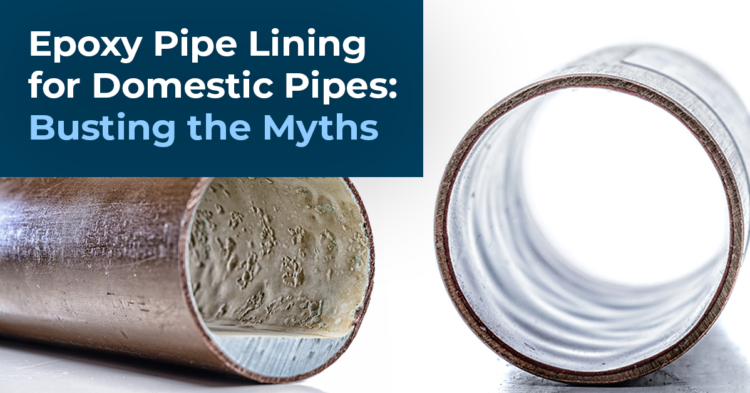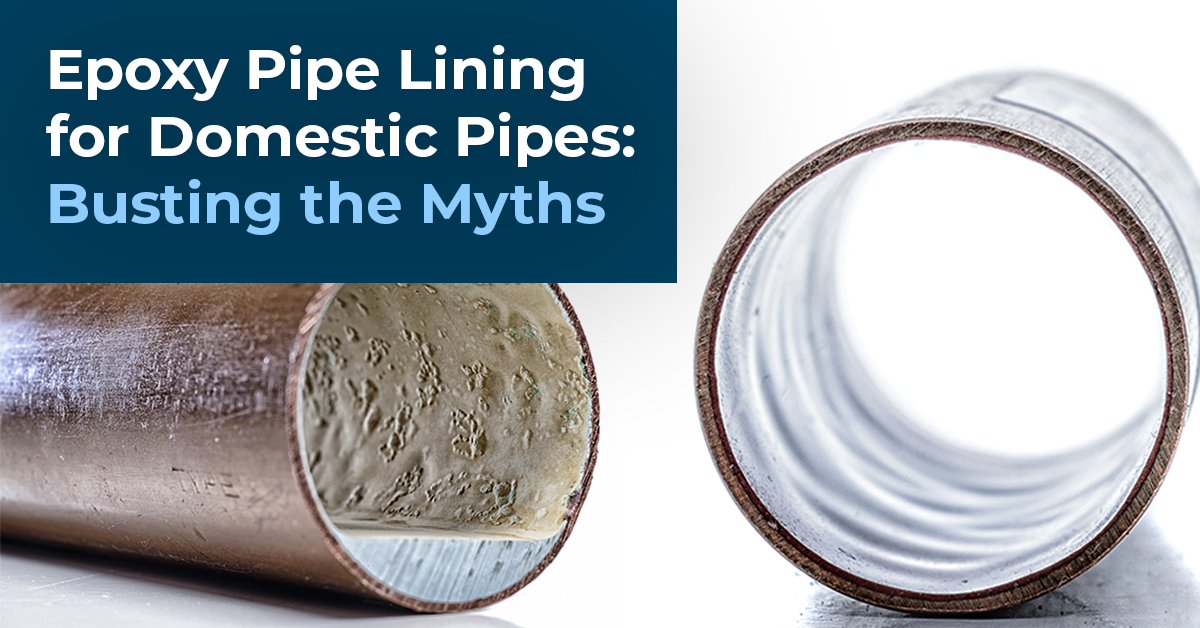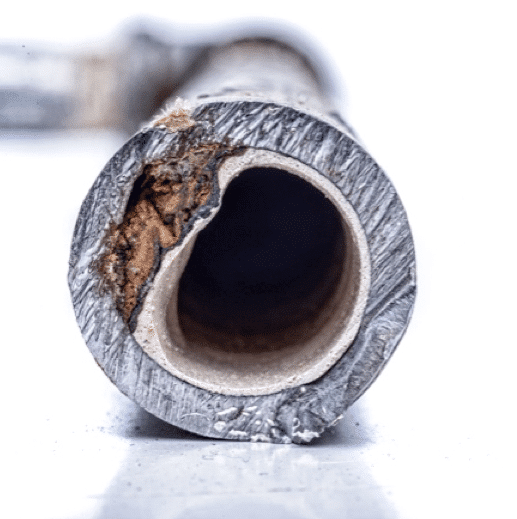Pipe lining providers frequently promote lining your property’s domestic water piping systems with epoxy as a more cost-effective solution than pipe replacement. The reality is more complicated. Learn why lining pipes can end up being more costly than replacing them.
>> This is part of a series exploring myths around epoxy pipe lining for domestic pipes. Learn more about this series by checking out our intro post, Epoxy Pipe Lining for Domestic Pipes: Busting the Myths.
Don’t Take Price for Granted. Get Bids for Lining and Replacement.
While pipe liners may claim they are more cost effective than pipe replacement, this has not generally been our experience. There are occasional circumstances when lining is cheaper, such as when the leaky pipes are buried underneath a concrete slab and cannot be abandoned and rerouted, which is a standard practice in the repipe industry. In this case, accessing the pipes to replace them can be costly (e.g., jackhammering concrete) so, temporarily fixing them with an epoxy solution may be a desirable alternative.
In most other “repipe versus lining” scenarios, it’s always important to get bids on both solutions to truly compare the pros and cons. In fact, we have often seen that in head-to-head competition between the cost of a completely new piping system and an epoxy lining solution, property owners and operators can repipe at an equal or lower cost than lining.
Pipe Lining Can Lead to Pipe Replacement
Even when a pipe lining bid is lower than a pipe replacement bid, there is a bevy of “known unknowns” that can turn a lining project into a partial or full pipe replacement, which considerably increases the cost.
For example, we’ve seen unfortunate situations when owners proceeded with a pipe lining project that was not completed properly. In the end, they paid to line their pipes and then, ultimately, to repipe.
In other examples, owners may learn that their existing old pipe is too deteriorated to accept the liner. When this happens, they may need to replace large portions of the system before proceeding with lining. Also, the lining sometimes can’t be used in certain system components, like valves and fittings, which means owners need to access and replace them in addition to pipe lining
In examples like these, the costs of a mixed solution—i.e., partial lining and partial replacement—can be considerably more expensive than just replacing the entire system. Not to mention the hassle for owners, operators, and residents! Think of it this way: if you have to open the wall to replace part of the system, the incremental cost of replacing the rest of the system is minimal.
Hidden Costs
We’ve also witnessed one potentially hidden cost with epoxy lining: the legal cost. Installers and manufacturers have faced numerous lawsuits involving claims of poor product performance and/or improper installation. There’s no knowing what the legal fees and remediation might cost a community. Even if a lining installer settles, the time and inconvenience to a community is considerable.
Choosing What’s Right for Your Community
As we’ve explained in this article, it’s not always true that lining your domestic water pipes with epoxy is less expensive than pipe replacement. When reviewing a bid, you can gain a better understanding of the comprehensive cost by inquiring about the installer’s means, methods, warranties, and the lining experience of their people.
Throughout our myth busting series, we’ll dive deeper into questions you can ask so that you make an informed decision about what’s right for your community. In the meantime, don’t hesitate to reach out to us for a free consultation about pipe replacement.




